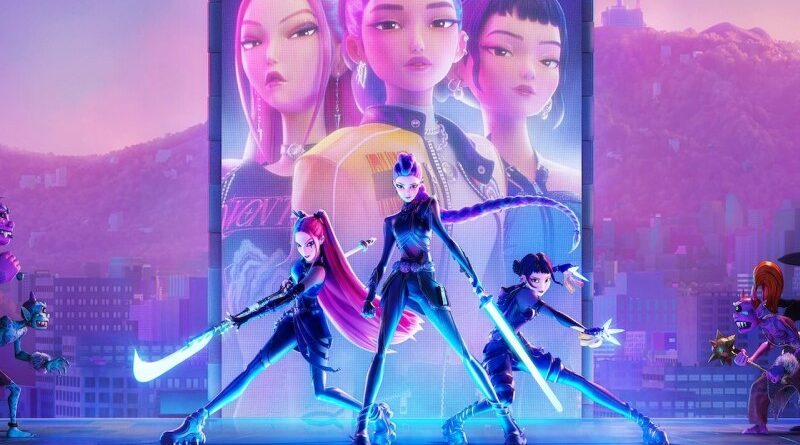Hyperspace Theories: The Success of K-Pop Demon Hunters
In a matter of weeks, the Sony-produced animated movie K-Pop Demon Hunters became the all-time most-viewed original title on Netflix. A limited-release theatrical run of the sing-along version of the film, for two days on fewer than two thousand screens after it had been available on streaming for two months, was the #1 movie at the box office for that weekend. With four songs in the Billboard Hot 100 chart, including “Golden” reaching #1, K-Pop Demon Hunters has attained soundtrack feats not seen since Purple Rain (1984) and Saturday Night Fever (1978). And the social media fandom for the movie shows no signs of slowing down.
On this episode of Hyperspace Theories, Tricia Barr and B.J. Priester discuss the multi-layered success of K-Pop Demon Hunters in its storytelling and in its appeal to fans. Building on longstanding themes of the blog and podcast, we examine the story structure of K-Pop Demon Hunters as a movie that isn’t a heroic origin story for its protagonists, and how the character-driven narrative modifies some classic plot beats and character archetypes. Although it isn’t an origin story, K-Pop Demon Hunters shares features in common with contemporary Heroine’s Journey stories, in contrast to tales based on the older monomyth of the Hero’s Journey, particularly its climax in a victory based on democratic collective participation rather than a triumph in combat by Rumi or Huntrix. In many ways, K-Pop Demon Hunters succeeds at developing the core narrative and world-building elements that the Star Wars Sequel Trilogy should have used, but didn’t.
We also consider other successful aspects of K-Pop Demon Hunters in resonating with so many people. The movie draws not only from its creator’s Korean heritage and folklore to tell a story with universal themes like shame and trauma, but also from her experience as a lifelong K-Pop fan to weave in moments and ideas that ring true to twenty-first century pop-culture fandom. The soundtrack itself is excellent, of course, but the progression of lyrics and musicality mirrors the plot and character development throughout the arc of the film. And of course it has an adorable animal sidekick, whose role is actually far more significant and impactful than first appears.
Related Links:
- The Hero’s Journey – discussing Campbell and Vogler (FANgirl Blog)
Social Media:
- Tricia Barr (@fangirlcantina) Instagram | Threads | Blue Sky
- B.J. Priester (@redpenoflex) Instagram | Threads | Blue Sky
- Fangirl Zone on Facebook
- REVIEW: Star Wars Visions Volume 3 - October 29, 2025
- REVIEW: The Revenge of the Sith Novelization Deluxe Edition - October 15, 2025
- Hyperspace Theories: The Success of K-Pop Demon Hunters - September 11, 2025











